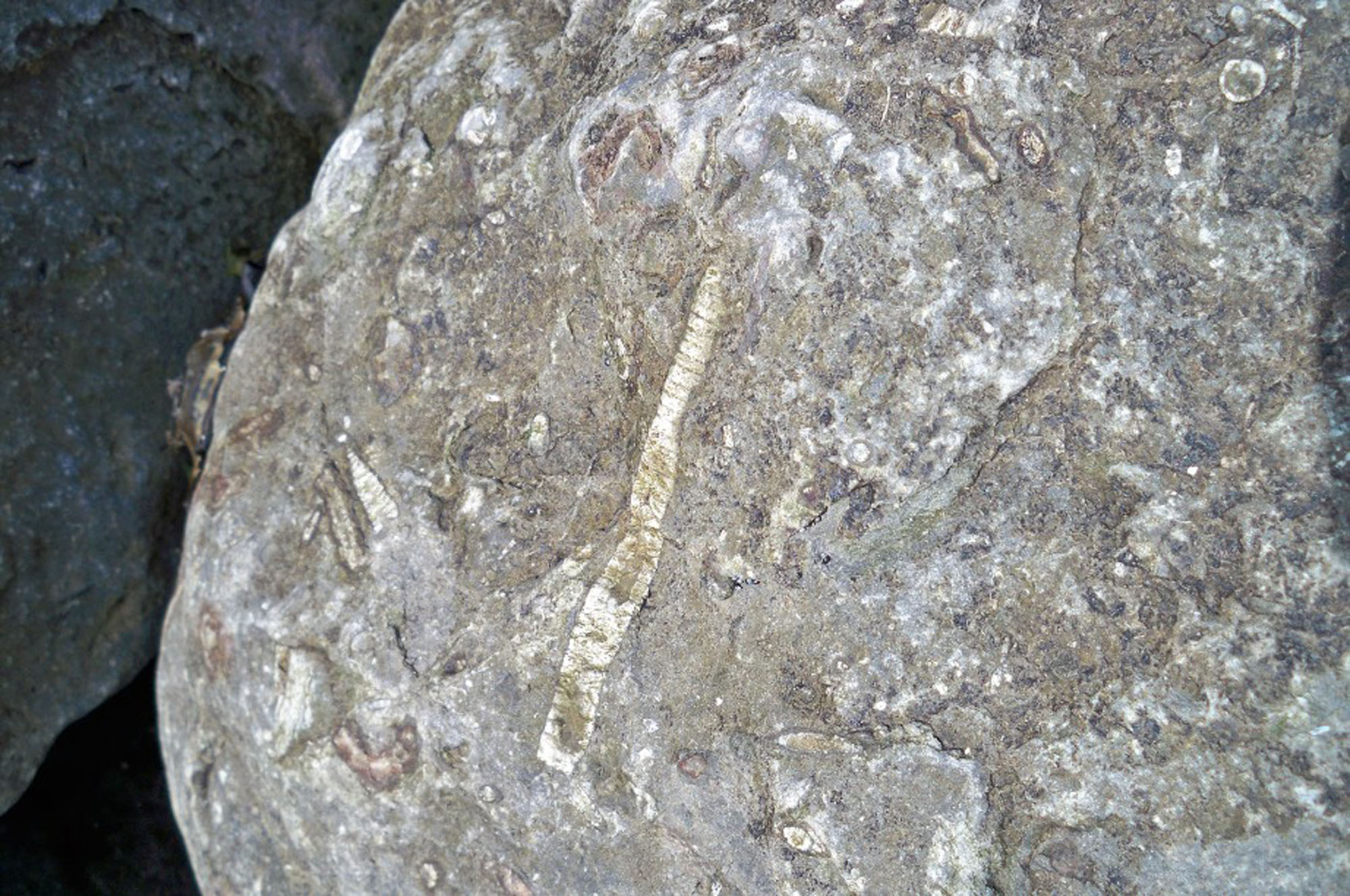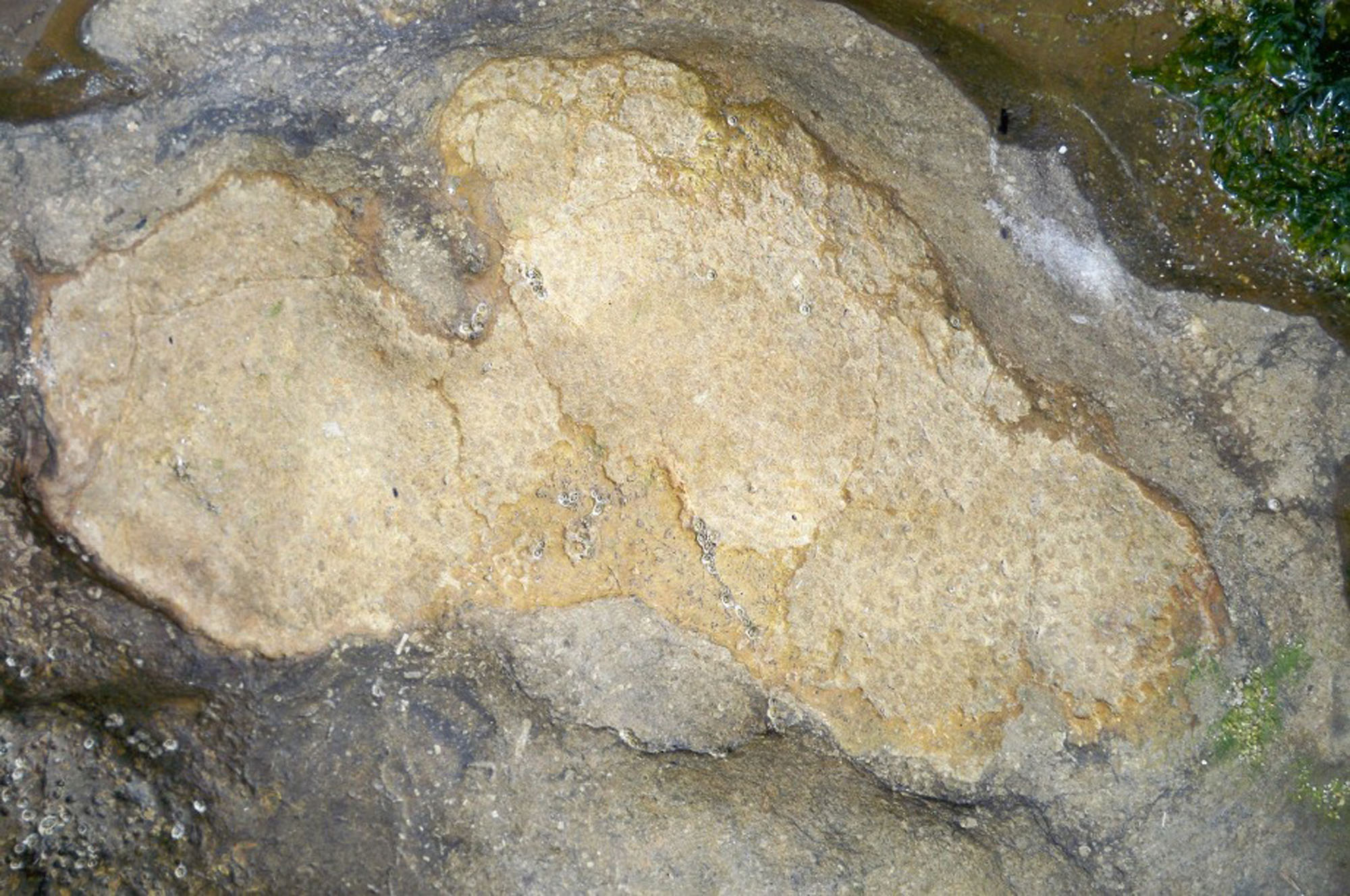Many pretty coral fossils can be seen in the rocks on the beach north of where the River Tweed meets the sea. Smaller coral pebbles can be collected, while larger examples in boulders can be observed.
DIRECTIONS
♦ Parking can be found at the end of Pier Road on the north bank of the Tweed, where the river meets the sea. From here, access the beach and walk north.
♦ Fossils can be found along the beach, up to the caravan park.
♦ If, by the time you reach this point, you are fed up of walking over big rocks, you can return along the path on top of the cliff. Keep an eye out for the interesting geological feature on the foreshore which can be seen from the area by the coastguard station. This was formed by ancient volcanicity in the region.
♦ Ref: 55.76637°N, 1.99259°W
PROFILE INFO
FIND FREQUENCY: ♦♦♦ – Many of the rocks and rock layers at this location contain fossils, however, these are mostly unspectacular fragments of crinoids and shells dispersed throughout the rock. Good quality rounded coral fossil pebbles can be found with a little looking.
CHILDREN: ♦♦♦ – The beach is easily accessible but in places is very rocky. Younger children may find the going tough here.
ACCESS: ♦♦♦ – Fossils can be found within a few hundred metres of the car parking area. However, to properly investigate this location a walk of around a kilometre and then back, over boulders in places, is required.
TYPE: – Fossil corals can be seen within limestone boulders and collected as smaller cobbles and pebbles on the beach.
FOSSIL HUNTING
Fossils here are mainly preserved in dark grey coloured limestone. Corals are the most common and most interesting finds, but crinoid pieces can also be collected. The occasional plant remain, such as Stigmaria roots, and bark imprints, may be found in large sandstone blocks.
To find coral fossils look out for light coloured, regular markings on a darker coloured rock background. These will be especially visible when the rock is damp. Fossils can be found across the width and length of the beach.

GEOLOGY
At Berwick, the marine Carboniferous deposits are from the Dinantian (Lower Carboniferous) of the Visean Stage (Holkerian Substage).
The rocks belong to what was once referred to as the Border Group, which in this area comprise mostly of the Fell Sandstone Formation, comprised of medium- to thick-bedded, fine- to coarse-grained cross-bedded sandstone, locally conglomeratic, with siltstone, mudstone, seatearth and locally developed thin coals and limestones.


SAFETY
Between Berwick and the large caravan park north of the town, there are cliffs with no access points off the beach. As such, it is important to investigate this stretch of coastline on a retreating tide. Always tell someone where you have gone when fossil hunting, and what time you expect to return. Be careful when walking across areas of larger rocks, they can be slippery and sprained ankles may result.
EQUIPMENT
A good eye is mostly all you need, but a pick will prove very useful for the shale. Wear hiking boots, as this is a foreshore location.
ACCESS RIGHTS
This site is a site of special scientific interest (SSSI). This means you can visit the site, but hammering the bedrock is not permitted. For full information about the reasons for the status of the site and restrictions, download the PDF from Natural England.
It is important to follow our ‘Code of Conduct’ when collecting fossils or visiting any site. Please also read our ‘Terms and Conditions‘
LINKS
♦ Buy Fossils, Crystals, Tools
♦ Location Discussions
♦ Deposits Magazine
♦ Join Fossil Hunts
♦ UK Fossils Network























